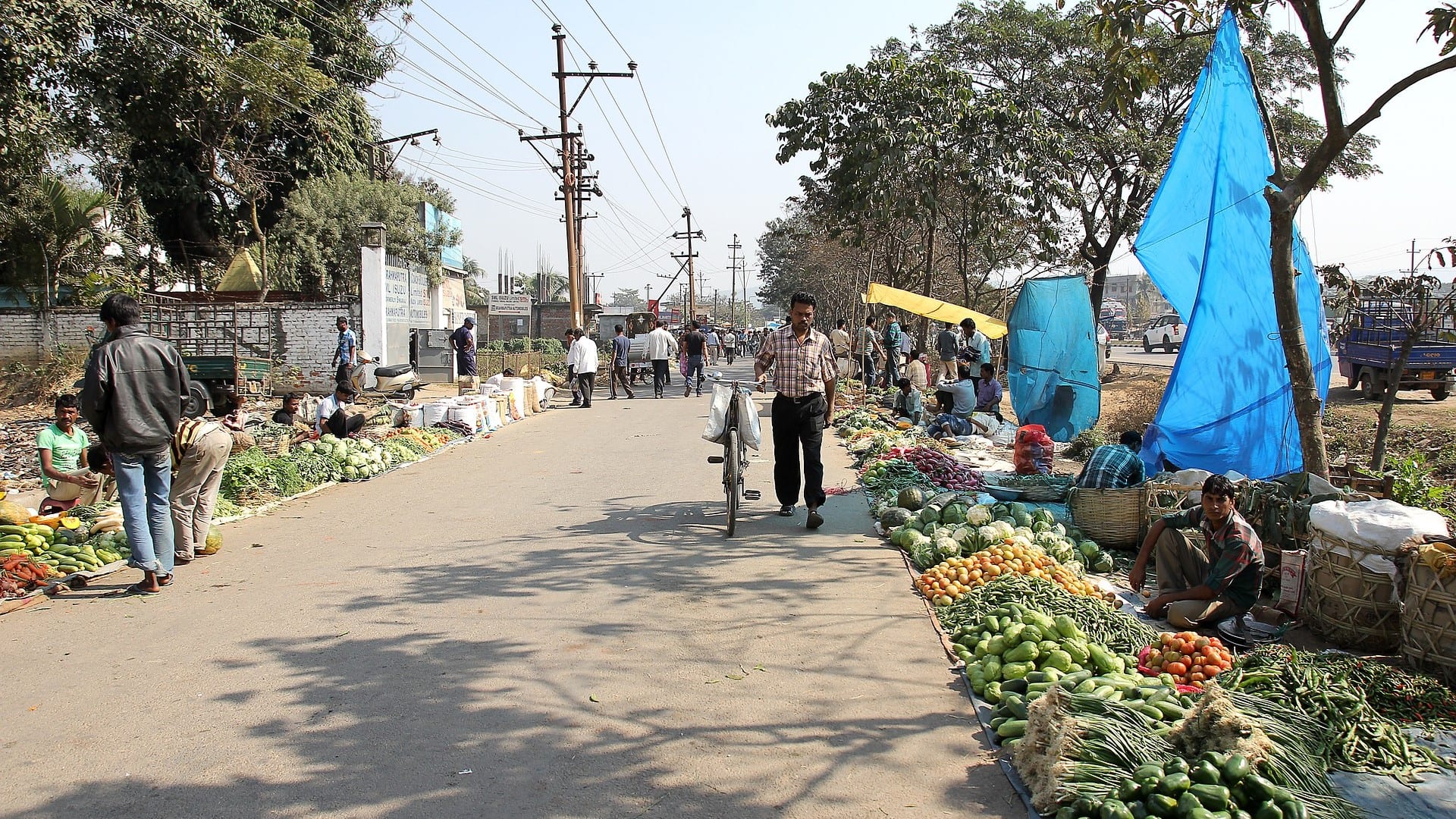Agriculture accounts for the largest part of India’s private sector activity. In 2019, the industry was worth INR 56,564 billion – equivalent to about $775 billion. It represents the primary source of income for over half of the country’s population and has a significant bearing on other sectors as well. Since independence in 1947, Indian agriculture has been heavily regulated by the government due to various factors, including famine and conflict, for instance. However, as is the nature of regulations, they tend to far outlive and grow beyond their original purpose. Unsurprisingly, there have long been calls to reform India’s agriculture sector.
The Indian farm reforms
On September 27, 2020, the Indian government passed the following new laws:
- the Farmers’ Produce Trade and Commerce (Promotion and Facilitation) Act
- the Farmers (Empowerment and Protection) Agreement on Price Assurance and Farm Services Act
- the Essential Commodities (Amendment) Act
These pieces of legislation are geared towards reforming the entire sector throughout the country. The Indian Government passed these laws in a bid to help boost private sector investment in agriculture. Through these three laws, it aims to improve the infrastructure and supply chains in national and global markets for India’s agricultural produce.
The Indian farm reforms seek to give farmers more control over their produce and how they sell it. As such, this will enable farmers to enter into contracts with investors who can offer technical expertise and capital. The expected outcome is more efficient production and competitive prices.
Hurdles to overcome
Upending decades of regulation and government interference is no easy task. Both the beneficiaries of the existing system and many in government will be keen to resist change. Upsetting the tenuous balance is bound to stir the hornet’s nest. Therefore, it is perhaps understandable that agricultural reforms were not high on the agenda of past administrations.
As there are around 263 million farmers in India, they form one of the key voter bases. They form a particularly sizable chunk of the electorate in the most populous states in the country. Since the agricultural sector supports more than half of India’s population, its development can have profound effects on many other sectors of the economy, leading to a meaningful impact on the average consumer.
Government attempts to appeal to this important voter base has resulted in years of subsidies, concessions, and handouts for farmers. The measures involved have broadly consisted of government interference with the price of crops, restrictions relating to supply and storage, along with barriers to the allocation of agricultural land to its most efficient use.
This was often cloaked in fanciful rhetoric highlighting the plight and fragility of the average farmer who was in need of protection from the government, away from the vagaries of the marketplace.
Unfortunately, in practice, these measures only exacerbated the plight of farmers. They had a detrimental effect on the efficiency and productivity of the agricultural sector by placing artificial barriers in the market. Though farmers seemingly benefited from assured prices, any positive consequences were illusory.
Starting in the 1970s, there has been increasing resistance to regressive governmental interference in Indian agriculture. Calls for liberal reform were made by the Shetkhari Sanghana, founded in 1979 by Sharad Anantrao Joshi, a government official turned farm reform activist.
Joshi and the Sanghana led various campaigns against the regulations which affected farmers’ freedoms. Their decades-long demand for change in the sector have played an important role in bringing about the recent farm reforms.
Why are there protests?
The new farm reforms are a step forward in the process of undoing the damage incurred over several decades. Yet still, news media reports show widespread protests across the nation. In particular, the farmers in the northern states of Punjab and Haryana have been at the forefront of the protests, making regular headlines. This resistance to change can be seen as a consequence of rent-seeking and lobbying by special interest groups to maintain an advantageous status quo.
While previous laws permitted the establishment of Government APMCs (Agricultural Produce Market Committees, or clearing houses) which were a network of middlemen and traders who, aided by a slew of government regulations, held sway over what prices that crops fetched. As such, the process allowed these middlemen to bag sizable commissions.
In the past, the government was permitted to impose limits on the produce to be held in storage and set up price floors or MSPs (Minimum Support Prices). Additionally, the government tended to purchase crops at the said MSPs through the APMCs. This led to significant distortions and inefficiencies in the markets.
The group which benefited most from this arrangement would of course be the middlemen in the APMCs. The average farmer would benefit far less and would be largely dependent on the middlemen for wading through the regulatory logjam.
Incidentally, the states of Punjab and Haryana (where much of the protests are concentrated) have some of the highest procurement rates from the government at minimum support prices. These MSPs have previously been guaranteed, particularly for rice and paddy. Moreover, as per Food Corporation of India’s data, these two states account for nearly 70% of government procurement of wheat.
Furthermore, there is no shortage of stories whereby middlemen illegally ship crops grown in other states to the APMCs in Punjab and Haryana to earn assured sums. This is to no benefit to the farmers, who are systematically kept out of the fray.
As noted journalist Henry Hazlitt outlined in his book, Economics in One Lesson (1946), “The group that would benefit by such policies, having such a direct interest in them, will argue for them plausibly and persistently [They] will either convince the general public that its case is sound, or so befuddle it that clear thinking on the subject becomes next to impossible.”
Applying this logic to the situation, the conclusion is as follows: the protests are likely to be a move by special interest groups who do not want their ‘interests’ to be affected.
At first glance, it may seem like the small farmers are those most affected, however a closer look at the situation paints a different picture. Those who are most likely to benefit from the protests are the special interest groups of middlemen and beneficiaries of the APMC system.
Lured by the prospects of assured sums by growing and selling paddy at MSPs, many farmers in Punjab and Haryana have joined the protests fearing the end of their glorious but inefficient run.
Though beneficiaries of the Green Revolution, Punjab and Haryana have negligible growth rates in the agriculture sector due to the systemic onset of APMCs and government procurement. Other states which have either abolished or weakened the APMC-based system show more positive growth.
Is it not better for reforms that promote growth and development were extended to the whole of India?
The special interest groups stand in opposition to reforms that can benefit both farmers’ and consumers’ interests. They stand in the way of diversification and growth of Indian agriculture, instead seeking to maintain inefficient practices, such as monoculture.
Amid all the concerns over farmers’ welfare, with the new reforms purportedly being their ‘death knell’, applying a little bit of economic reasoning to understand the positives of the new laws can help us gain some perspective.
What do the new laws do?
The new laws propose to disintegrate the ailing APMC system and reduce government interference in the market. They also seek to empower the farmer to interact directly with private players while also negotiating a price that is dictated by market forces.
In every respect, these reforms are geared for the individual farmer’s freedom to pursue the most efficient use of his land and resources. They give him agency and power in a market-based system which can:
- Guarantee better prices
- Connect him to end-users and consumers without going through red-tape
- Promote competition, innovation and investment in the sector
While there are still more factors to this story, one thing is certain: resistance to the farm reforms has shown how years of rent-seeking and favoring special interests can get in the way of beneficial reform.
The Indian agricultural scene has changed substantially over the years. The new reforms seek to change the rules of the game and bring the fruits of economic liberalization to the everyday farmer in India.
While there remain more steps to be taken, like stronger protection of property rights and enforcement of contracts, the reforms pave the way for a potential upturn in the economy that has been battered by the pandemic.
After the Green Revolution, it is now time for farmers and consumers to benefit from a free market revolution.
To find out more about the economics of Indian agriculture and the Farm Reforms, check out the following webinars:
To read more about economic development, you can check out our cluster page by clicking on the button below.
This piece solely expresses the opinion of the author and not necessarily the organization as a whole. Students For Liberty is committed to facilitating a broad dialogue for liberty, representing a variety of opinions.








